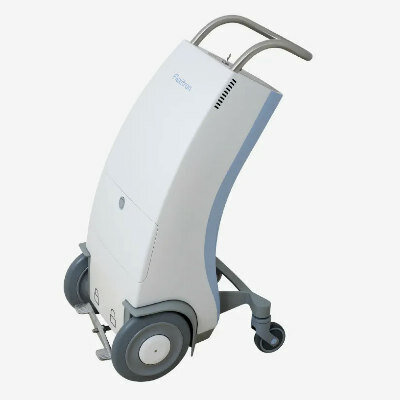Tracking New Cancer-Killing Particles with MRI
By MedImaging International staff writers
Posted on 04 Jan 2010
Researchers have created a single nanoparticle that can be tracked in real time with magnetic resonance imaging (MRI) as it zeros in on cancer cells, tags them with a fluorescent dye, and destroys them with heat. The all-in-one particle is one of the first examples from a merging field called "theranostics,” which develops technologies physicians can use to diagnose and treat diseases in a single procedure.Posted on 04 Jan 2010
The research, performed by investigators from Rice University (Houston, TX, USA) and Baylor College of Medicine (BCM; Houston, TX, USA), was published online in December 2009 in the journal Advanced Functional Materials. Tests up to now involve laboratory cell cultures, but the researchers reported that MRI tracking will be especially beneficial as they move toward tests in animals and people. "Some of the most essential questions in nanomedicine today are about biodistribution--where particles go inside the body and how they get there,” said study coauthor Dr. Naomi Halas. "Noninvasive tests for biodistribution will be enormously useful on the path to FDA [U.S. Food and Drug Administration] approval, and this technique--adding MRI functionality to the particle you're testing and using for therapy--is a very promising way of doing this.”

Image: Nanoparticles destroying tumor. Artwork showing nanoparticles (blue) containing cytotoxic drugs, targeting tumor cells (purple), leading to their destruction (orange cells at upper left and upper right) (Photo courtesy of Medi-Mation).
Dr. Halas, a Rice professor of electrical and computer engineering and professor of chemistry and biomedical engineering, is a pioneer in nanomedicine. The all-in-one particles are based on nanoshells--particles she invented in the 1990s that are currently in human clinical trials for cancer treatment. Nanoshells harvest laser light that would normally pass harmlessly through the body and convert it into tumor-killing heat.
In designing the new particle, Dr. Halas teamed up with Dr. Amit Joshi, assistant professor in BCM's division of molecular imaging, to engineer nanoshells by adding a fluorescent dye that glows when struck by near-infrared (NIR) light. NIR light is invisible and harmless, so NIR imaging could provide clinicians with a means of diagnosing diseases without surgery.
In looking for ways to attach the dye, Dr. Halas' graduate student, Rizia Bardhan, discovered that dye molecules emitted 40-50 times more light if a tiny gap was left between them and the surface of the nanoshell. The gap was just a few nanometers wide, but rather than waste the space, Ms. Bardhan inserted a layer of iron oxide that would be detectable with MRI. The researchers also attached an antibody that lets the particles bind to the surface of breast and ovarian cancer cells.
In the laboratory, the scientists tracked the fluorescent particles and confirmed that they targeted cancer cells and destroyed them with heat. Dr. Joshi stated that the next step would be to destroy whole tumors in live animals. He estimates that testing in humans is at least two years away, but the ultimate goal is a system where a patient gets a shot containing nanoparticles with antibodies that are customized for the patient's cancer. Utilizing NIR imaging, MRI, or a combination of the two, clinicians would observe the particles' progress through the body, identify areas where tumors exist, and then destroy them with heat. "This particle provides four options--two for imaging and two for therapy,” Dr. Joshi said. "We envision this as a platform technology that will present practitioners with a choice of options for directed treatment.”
Ultimately, Dr. Joshi hopes to develop specific versions of the particles that can attack cancer at different stages, particularly early stage cancer, which is difficult to diagnose and treat with current technology. The researchers also expect to utilize different antibody labels to target specific forms of the disease. According to Dr. Halas, the team has been careful to choose components that are either already approved for medical use or are already in clinical trials. "What's nice is that every single component of this has been approved or is on a path toward FDA [U.S. Food and Drug Administration] approval,” Dr. Halas noted. "We're putting together components that all have good, proven track records.”
Related Links:
Rice University
Baylor College of Medicine














